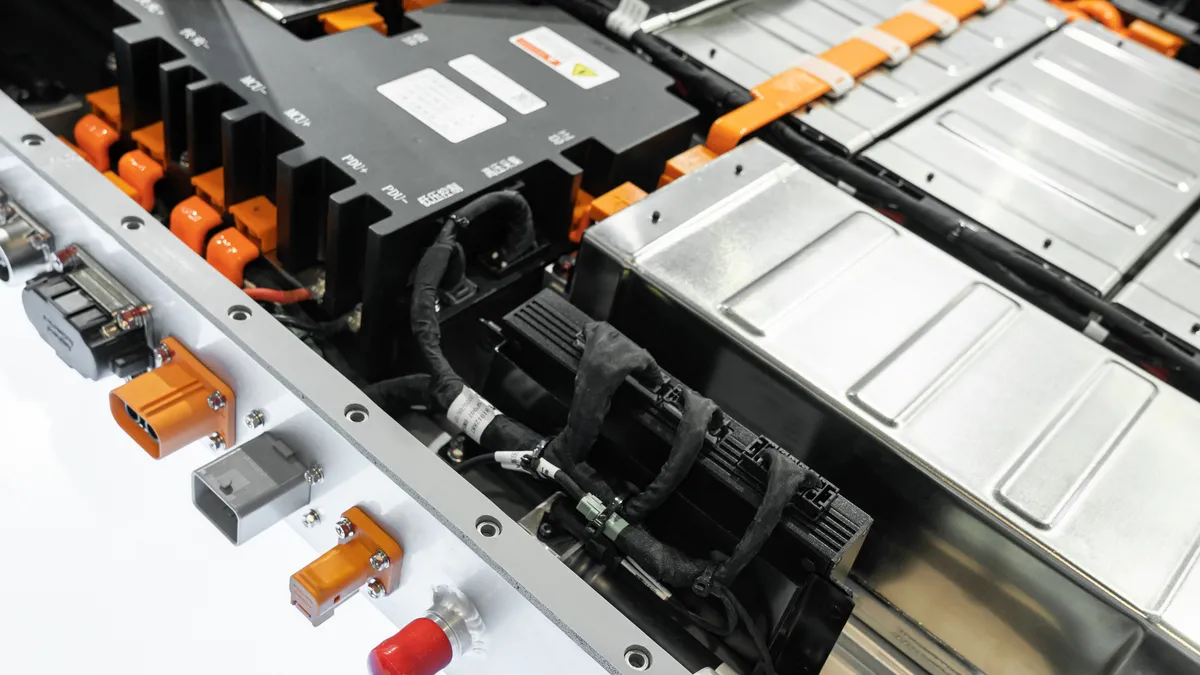Dive Brief:
- Element Energy has energized the world’s largest second-life battery energy storage facility, a 53-MWh West Texas installation comprised of 900 used electric vehicle batteries, the company said Nov. 21.
- Element now has nearly 2 GWh of second-life EV batteries awaiting deployment in stationary energy storage facilities, it said.
- Also on Nov. 21, Element announced a partnership with LG Energy Solution Vertech to deploy “turnkey” energy storage systems featuring Element’s containerized second-life batteries and its proprietary battery management system, supported by LG Energy Solution Vertech’s power equipment, system integration, energy management system and operations and maintenance services.
Dive Insight:
Repurposed EV batteries can retain 80% of their original capacity, McKinsey said in 2019. At least some of Element Energy’s 2 GWh of used lithium-ion batteries have even more capacity, with some in excess of 90%, Element co-founder and CEO Tony Stratakos said in an email.
Stratakos characterized Element’s used battery supply as “robust … with more expected next year,” while declining to disclose where his company sources them. But industry experts say automakers like Nissan offer a ready supply for some second-life battery integrators.
Reusing instead of recycling the 2 GWh of used batteries already procured by Element could avoid approximately 8,500 metric tons of post-recycling waste and 150 metric tons of carbon dioxide emissions, Element said.
Public and private investors appear optimistic about the second-life battery storage segment. Last month, the U.S. Department of Energy awarded $20.3 million to Element competitor Moment Energy to support construction of a 1-GWh Texas manufacturing facility beginning early next year.
Element’s 53-MWh Texas installation received $7.9 million in bipartisan infrastructure law funding from DOE in 2022. Earlier this year, Element raised $111 million in combined equity and debt funding to grow its operations, the company said last week.
The installation has been storing and discharging power to the Electric Reliability Council of Texas grid since May and has allowed Element to validate its technology at scale, the company said.
Element is “agnostic as to where on the grid” its second-life systems are deployed, but the 30% to 50% cost discount over new batteries means “they may be deployed in markets and applications that have little storage penetration to date,” Stratakos said.
Element also offers the proprietary energy management software that supports its second-life battery systems to developers of new-build battery systems and operators of existing stationary storage installations, Stratakos said.
Element’s customers are “leading energy storage developers” that generally purchase turnkey systems from battery integrators, Stratakos said. The company’s new partnership with LG Energy Solution Vertech supports that approach by enabling fully turnkey second-life battery energy storage systems with long-term service agreements supported by LG Energy Solution Vertech, he said.
LG Energy Solution Vertech has more than 19 GWh of battery energy storage installed, in construction or contracted in the U.S. and abroad, Element said.













